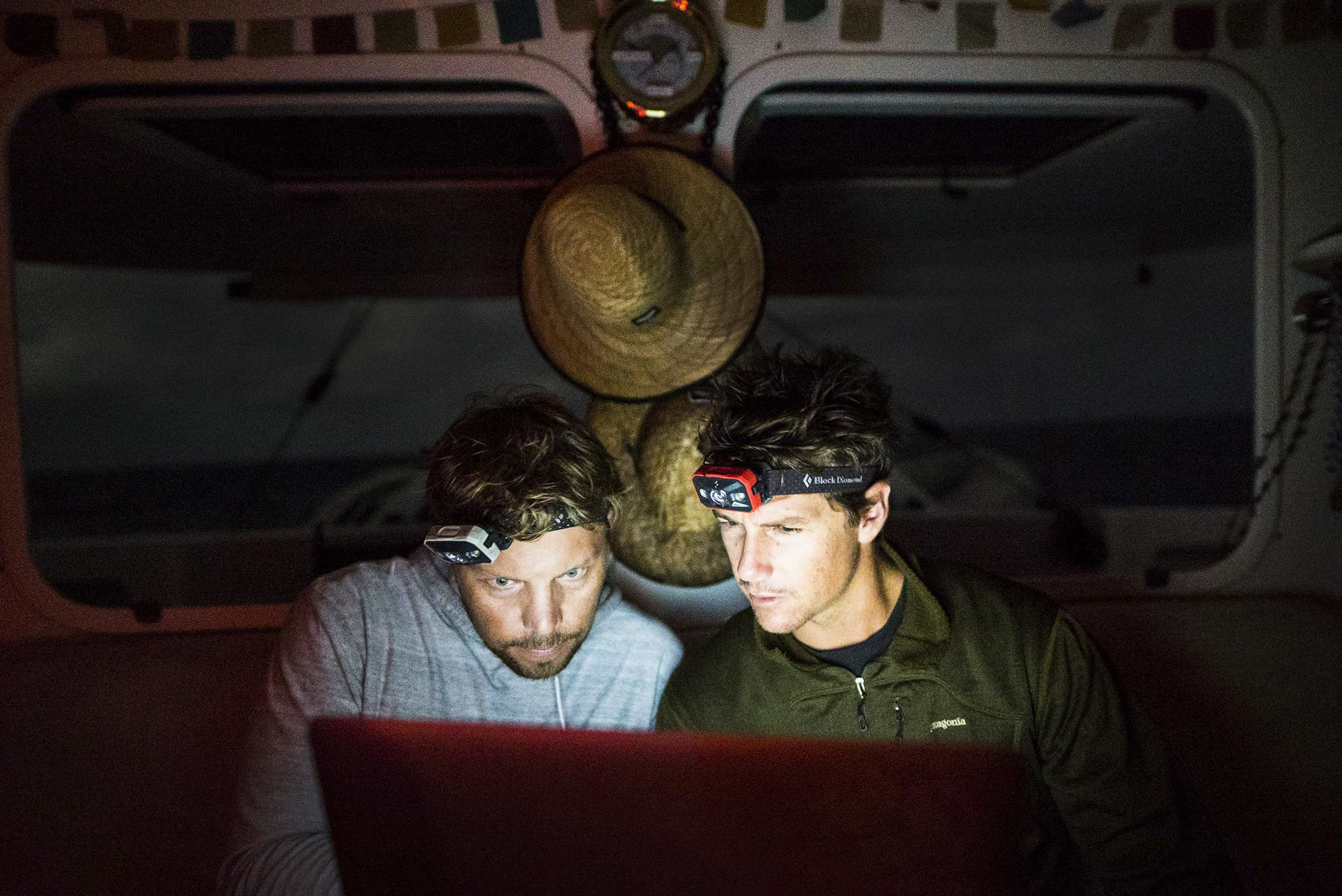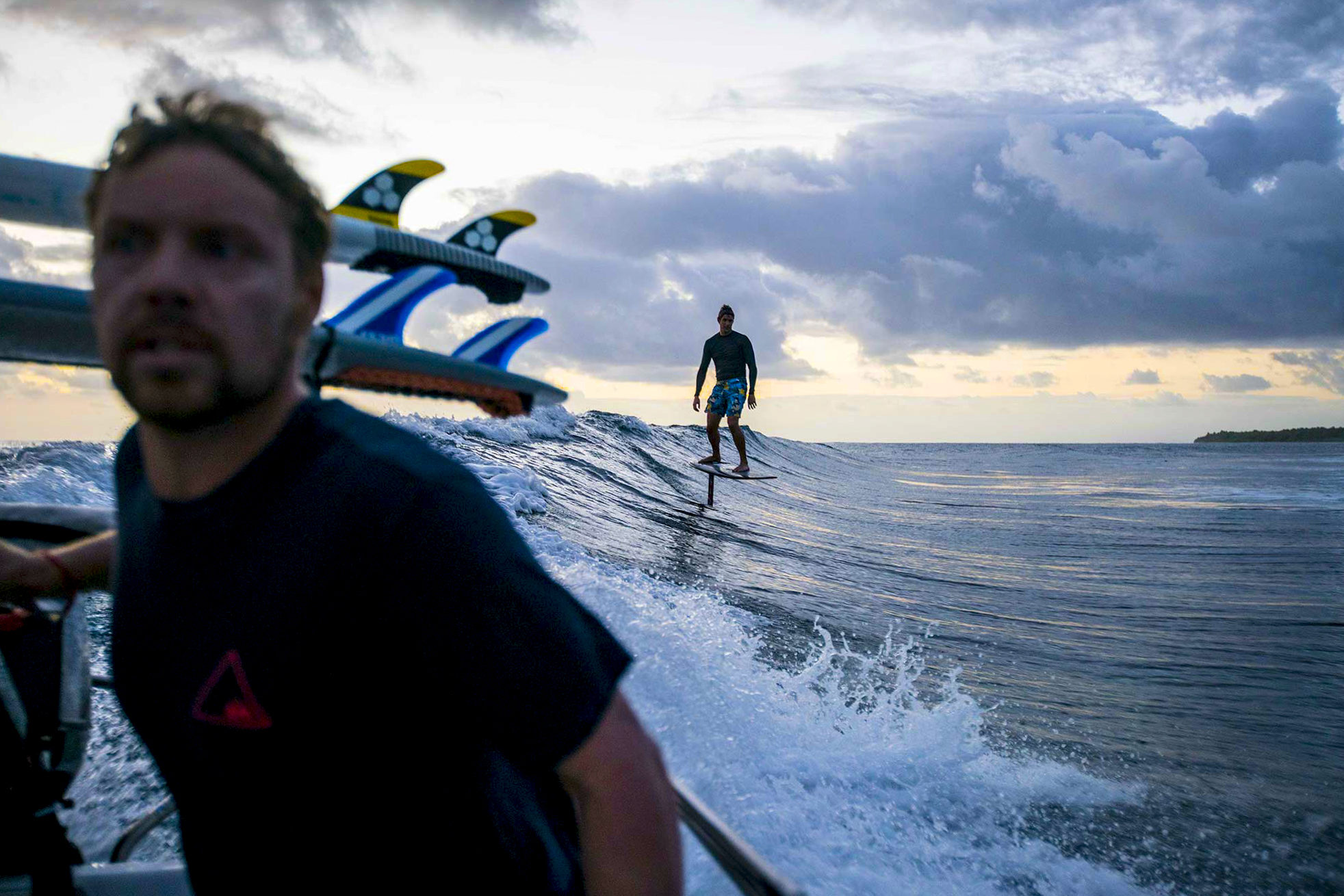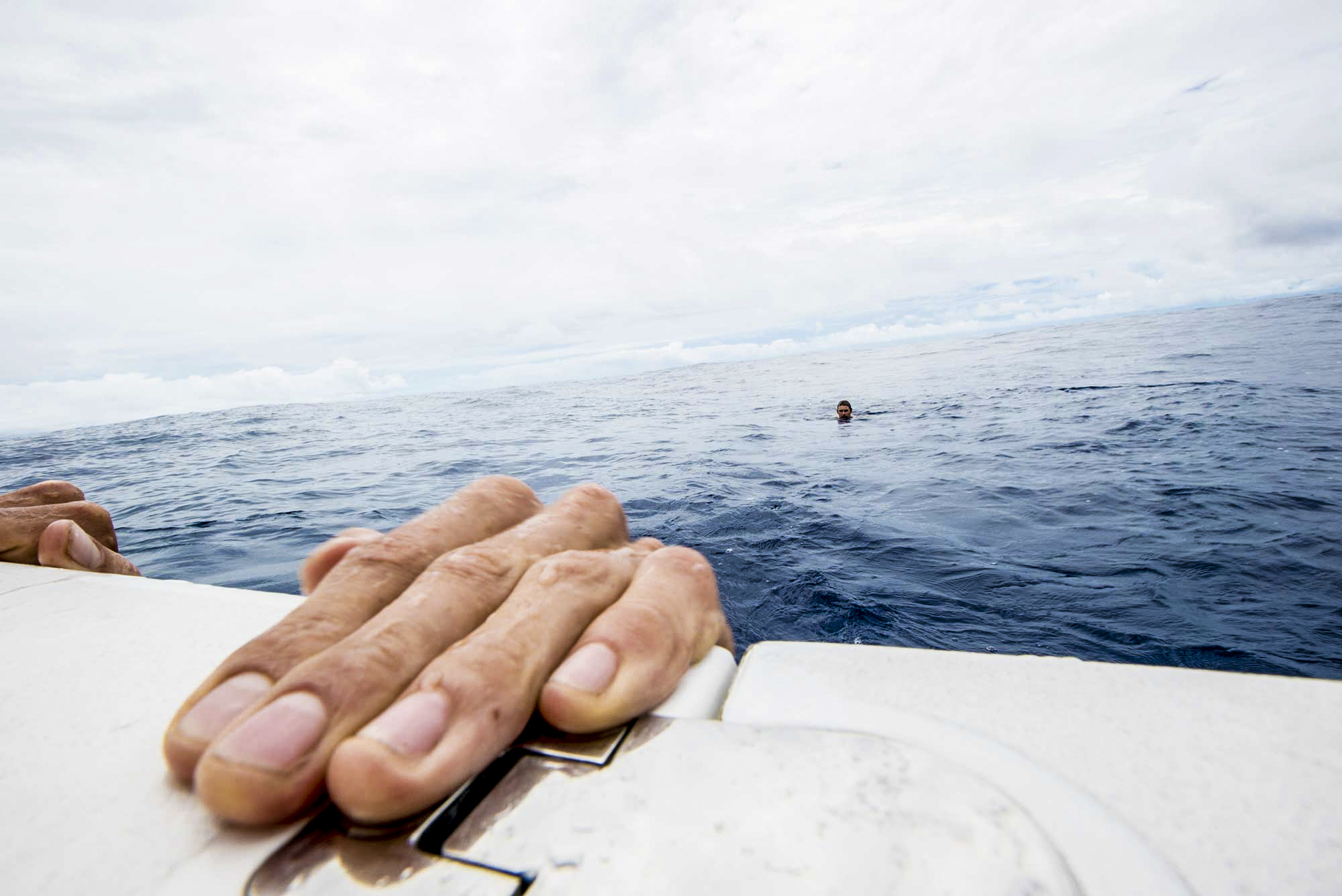In this Roam Original short film, Lines to Hawaii, snowboarder Travis Rice, big-wave surfer Ian Walsh, both at the top of their respective games, sail 2,500 nautical miles from Tahiti to Hawaii. Joined by first mate Graham Scott and filmer Amory Ross, the crew’s goal is to search for surf and explore some the most remote islands on Earth, the Line Islands.
It is perfectly fair to call extreme athletes Travis Rice and Ian Walsh pioneers of their sports; Rice has made his brand of hard-charging backcountry snowboarding a genre in itself while pro surfer Walsh famously ditched tow-in jet skis in favour of his own two hands to paddle into waves that nobody had paddled into before. But what was the inspiration to explore the remote interior of the Pacific Ocean on a slow sailboat, together?
“This has been the dream, to sail from Tahiti to Hawaii through the Line Islands, like the Polynesian pioneers did so many years ago,” says Rice, an avid sailor since childhood, who has quietly looked to the sea for retreat from a hectic schedule descending the world’s steepest mountains. FALCOR, his 48-foot carbon fiber catamaran, had made the long journey from North Carolina to Tahiti via the Panama Canal under Rice’s command several years earlier, and the final leg to Honolulu was always a part of the plot. Much like those Polynesian explorers of the 1500s who crossed the Pacific, this 2,400 nautical mile voyage was designed to be exploratory from the start.
"The intention was to go with a loose plan, to have the ability to veer off course here and there, see what we see. Learn from the new environment and really be open to whatever comes our way"
It was a mutual sense of exploration that brought Rice and Walsh together, too. They’ve found a shared interest for the adventure of sailing and disconnecting at sea. While sailboats don’t feature in either of their professional pursuits, they’ve enjoyed advancing themselves and their passions into new areas. And, over the last year or so they’ve discussed cruising the isolated Line Islands seeking uncrowded surf, and the expedition was born.
“I’ve spent my entire life in the ocean and have done a lot of boat trips looking for waves but in the last few years I’ve just really had a fascination with sailing and it almost feels like learning how to surf again,” says Walsh, who recently acquired a small Hobie catamaran for his own recreation.
“This is a really unique opportunity to see a big part of an ocean that I’ve spent a lot of time in, and an area that I’ve never been in the Pacific. I’m excited to see these faraway spots and check out some islands along the way, while soaking up the sailing like a sponge.”
Located in the central Pacific Ocean, the Line Islands are a series of volcanic atolls that form a coral archipelago covering roughly 200 square miles. Their environmental conditions vary greatly, with some uninhabited islands home to pristine reefs and abundant wildlife while more populated islands show the unfortunate effects of pollution and overfishing.
As certified civilian scientists, Rice and Walsh partnered with Adventure Scientists, a grassroots non-profit organization that uses contributors already in the field to collect new environmental data, to aid in their study of ocean microplastics. The FALCOR crew saved a canteen of sea water every hundred miles, 22 samples in all, across a stretch of ocean never surveyed before, and the results show that 73 percent [of some of the most isolated waters on Earth] contained plastic contamination.
Depressing science aside, team FALCOR had quite the trip. Cruising and surfing the length of the Line Islands they tiptoed the International Date Line before making a significant open-ocean passage to Hawaii, crossing the Equator and notorious Doldrums, an area of little wind and powerful squalls, arriving to a brightly lit American metropolis after 19 days of unplugged data-less bliss.
But both pioneers will happily tell you about the appeal of shutting things down to live off the grid on a sailboat in the middle of an ocean – the feeling of swimming in 16,000 feet of water, the responsibility of managing a complicated boat alone, sailing through dark and moonless nights, pastel sunrises and fiery sunsets, new islands, their indigenous people and discovering the vast unknowns that lie at the edge of an unfamiliar horizon.
Written by Amory Ross, as seen on RedBull.com

















































